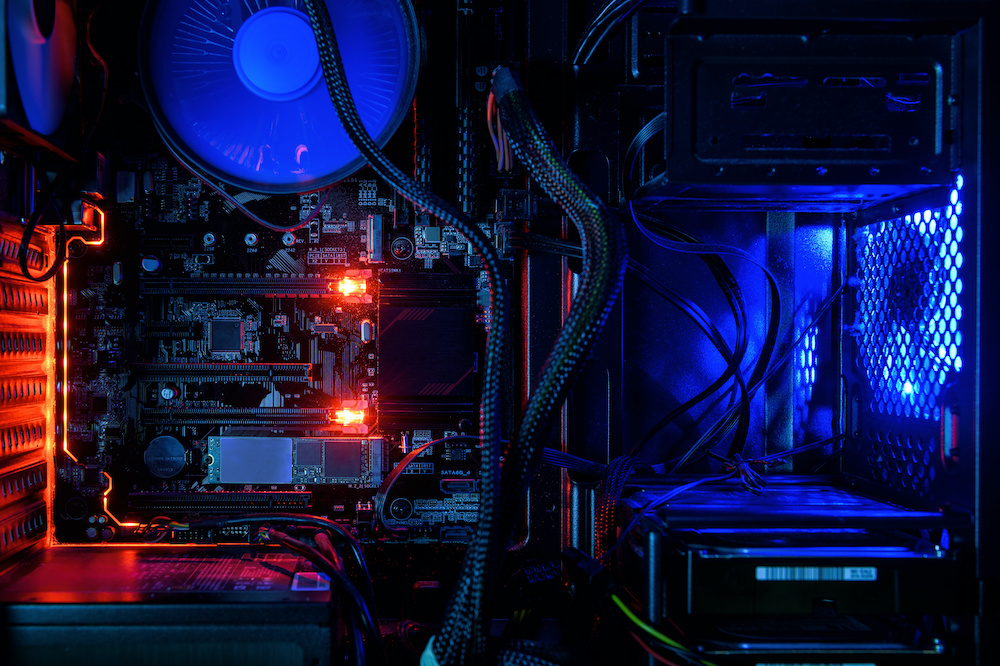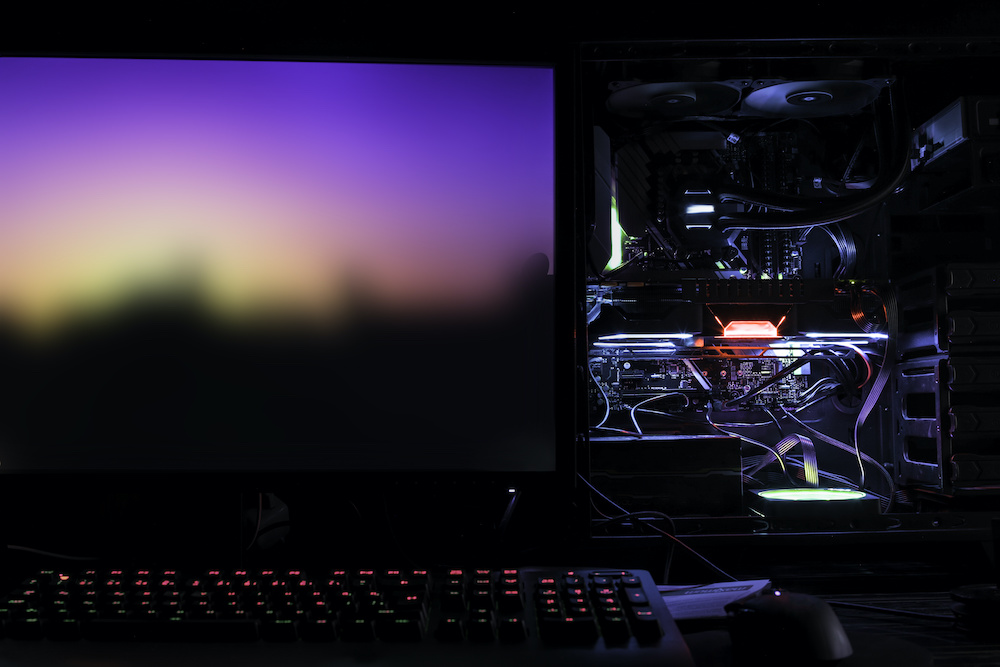Red Light on Motherboard: What Does It Mean?
We may earn a commission for purchases using our links. As an Amazon Associate, we earn from qualifying purchases.
Noticed a tiny red light blinking on your motherboard when you’re quite sure it wasn’t there before?
A red light on the motherboard is probably an indication that something is wrong with your computer.
Since not all motherboards are the same, the best way to troubleshoot this is to bring out your board’s instruction manual.
If you did not keep the instruction manual that came with the box, you could probably download a copy from the manufacturer’s website.
Once you have a copy of your particular board’s guidebook, look for the motherboard diagrams and LED light troubleshooting instructions.
Use these diagrams and instructions with the following tips and tricks, and you might just save yourself a trip to your local tech repair store.
What Is That Light?
Motherboard red light indicators vary from model to model, from non-gaming and gaming boards.
Nonetheless, it is important you understand that each LED light on your board has a purpose.
Usually, you will see some red LEDs lighting up every time you boot up your computer. These are indicators of components that are yet to start up.
Observe as the lights automatically go off as soon as all the components in the system go on.
Some red lights may seem new, useless, or negligible, but a red light could save you from dealing with more damage and having to buy replacement parts.
These built-in lights may not even be red-colored because some could have different color-coded assignments.
They also appear in different lighting effects or configurations, and each can correspond to a unique set of possible causes.
ALSO READ: What Is VRM on a Motherboard?
You can see it blinking, breathing (fading in and out), or as a continuously lit, solid red light on motherboard sections.
Red Light on Motherboard: Causes and How to Fix Them
There are several reasons why a motherboard red light indicator started glowing in your computer system.
After carefully studying the board diagrams in your guidebook, there is a good chance that you can pinpoint the exact cause of a particular red LED.
Let’s take a look at all the possibilities.
1. Hardware Connection Problems
Most motherboards have an EZ Debug LED section somewhere.
This section has at least four LED indicators that correspond to undetected or failing CPU, RAM, GPU, and BOOT device from top to bottom.
These LEDs are for debugging the connection status between these components and the motherboard.
CPU
If you see the CPU debug LED lighting up, your processor may not be detected by the system.
Check if the CPU is correctly attached to its socket and its power connector is in its proper place.
Additionally, ensure that the CPU fan is securely plugged into a power source.
Another cause for a CPU debug LED could be a drained CMOS battery, but we will discuss this further in the next sections.
RAM
Non-detection of RAM or DRAM is the primary culprit for a DRAM debug LED lighting up.
Fix this by checking if you inserted all of your RAM cards correctly.
Make sure you hear the clicking sound of the two end clamps for each RAM slot.
GPU/VGA
For a GPU or VGA red light indicator, re-examine the PCI-e slot and power connection attachments of your graphics card.
BOOT Device
You may have several BOOT devices on your system, and none of them are working or connected at all.
A BOOT device contains your operating system (OS), which means it is one of your computer storage drives. Again, inspect for any loose connections.
2. Other Hardware Problems
The same red light on your motherboard could also indicate specific compatibility issues between your motherboard and some installed components.
It could also indicate that one of your PC components already needs a replacement.
Compatibility
Compatibility issues seldom happen unless you do a fact-check whenever you purchase your computer parts separately.
More often than not, when you buy a whole computer set, your local tech store ensures that all of the components on the system you buy are compatible.
Broken Parts
Sometimes, you might have to say goodbye to a specific cog in your computer system.
Any component that has been working for a very long time can gradually deteriorate and stop functioning.
A red LED on the motherboard could indicate that the component has already run the course of its lifetime.
It could be the perfect time for you to go shopping for new replacement parts.

3. Incorrect BIOS Settings
Any solid red light on motherboard could also indicate incorrectly set BIOS settings.
The basic input/output system (or BIOS) is the first program your CPU runs to start the whole computer system right after pressing the power button.
It is also the program you use to manage data exchange between the OS, storage drives, display adapter, keyboard, mouse, and printer.
You may have played around with several BIOS settings, which could have caused your computer not to boot up properly and turn up a red LED.
To fix this, go over your motherboard manufacturer’s guidebook one more time and look for instructions and diagrams about resetting the BIOS.
The diagrams will show you where to look for a reset switch or a jumper that you can short to bring all BIOS settings back to default.
Additionally, you can also take out the CMOS battery (again, check the diagrams) and put it back only after more than five minutes.
Doing this will wipe out all of your inputs on the BIOS and reset its default parameters.
4. CMOS/BIOS Battery Issues
Most modern motherboards only use the button-type battery for maintaining onboard oscillator and clock circuits for the Real-Time Clock (RTC).
The battery keeps the oscillator and clock running even when the computer is off (to display date and time correctly whenever it goes on).
However, on older motherboard models, that same battery provides your computer with a tiny source of power for keeping BIOS settings when you turn the whole system off.
Despite the phrase “CMOS battery,” CMOS stands for Complementary Metal Oxide Semiconductor. It is a technology used to produce integrated circuits.
Over time, people incorrectly used “CMOS” as a generic term for a low power area RAM that uses a CMOS chip with a button cell on a motherboard.
This static RAM area requires the battery to maintain user-settable BIOS settings whenever the computer is powered off.
Drained CMOS/BIOS Battery
If your motherboard is an older model and still uses a battery to maintain BIOS settings, the battery will eventually lose its juice after some time.
Here is where a red light might start lighting up on your motherboard to indicate that something prevents your system from loading the necessary BIOS settings before startup.
Although a CMOS battery can typically last up to 10 years, you can end up draining one depending on how often you use your computer.
Remember, the onboard BIOS only uses the battery whenever the computer is turned off, so the CMOS battery can last longer if you use your computer regularly.
Still, you don’t have to worry about changing the button battery because it is cheap and easy to replace.
5. Overheating
Alternatively, a blinking red light, or any light for that matter, can signal overheating issues within your computer system.
To check this, you can take out the side panel of your computer case and observe heat levels surrounding your CPU and graphics cards.
Some of your computer cooling system components may not be working or appropriately connected to a power source.
Some computer RGB systems allow you to direct any onboard RGB lighting equipment to signal overheating issues that may occur.
6. POST Test Signals
Finally, a red light appearing on your motherboard could indicate faulty signals detected by onboard POST checks.
POST stands for “Power-On Self-Test,” a series of system checks that your computer runs at the beginning of every boot sequence.
A POST scans the hardware and checks whether the CPU, DRAM, and hard drives are working correctly and in unison.
If all the tests pass, your computer automatically proceeds to the home screen.
Otherwise, the POST sends out results through display screen text, audible beep sounds, or red LED light signals.
If the BIOS screen works, it can display messages such as “CPU error – undetectable” or “Missing video adapter or faulty memory.”
If not, you will hear a variation of beeping sounds or see a variation of red lights.
You can decipher the meaning of each error beep or light code by consulting your motherboard guidebook or checking the product website on another device.
RELATED: Parts of a Motherboard (Guide)
Getting Past a Red Light on Your Motherboard
Using these tips and tricks, you can get past any signal or red light on motherboard parts in your computer system.
You don’t have to panic whenever a red light appears on your motherboard as long as you have access to your particular board’s instruction manual.
In addition to this, the Internet is flooded with different tech forums where you can ask for help about a red light on a particular motherboard brand and model.
Really, the only thing stopping you from solving your red LED light problem is not having another device for browsing online.

